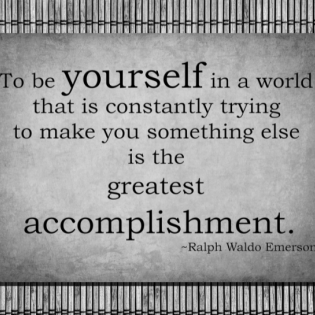Caring for Self and Others
Recognizing that each person has their own story as complex and meaningful as one's own, we build empathy and connection to others. When we take care of our own worries, needs, and joys, we can be better balanced for collaborating with others for a better world.
The learner will know or be able to
- make a list of stresses that people experience.
- practice a role-play that expresses empathy while maintaining care for oneself.
- take action to address a need that impacts themself and their peers.
Video defining the invented word sonder by John Koenig in The Dictionary of Obscure Sorrows: https://youtu.be/AkoML0_FiV4?si=3DgsbG9JcduWchSk
- How can you integrate self-care into your daily life to enhance your ability to help others?
- Why is it important to take care of yourself before helping others? Does it help you? Does it help others?
Instructions
Play the video "Sonder" that defines the made-up word meaning seeing others as complex as yourself.
Talk about the video and what they think or connect with from the definition of "sonder" or the meaning of a "full complex life." After watching the video, discuss what it is like to recognize that others have full complex lives that we know nothing about. Why does it matter? How does this relate to empathy or build empathy? Make sure the young people understand the concept of empathy before the next activity. This book can help.
Privately write for 5 minutes about all of your current thoughts, worries, hopes, wonderings, and to-do items. Tear up the list so no one else reads it. Reflect that each person has their own list as complicated and important as yours, and you have to care for your own list first before you can help others with theirs. Review the elements of self-care from lesson one.
Empathy Role-Play: Read over the following scenarios and think about how you would approach these situations with empathy, considering how you can balance your own well-being with the needs of others. Meet in pairs to practice this balance.
Note: you may want to speak to a social worker before you do this activity to get tips on how to be sensitive about what kids are going through.
- A friend is struggling with stress: Your friend is visibly anxious, even shutting down, because of many expectations at home and school and now getting ready for upcoming exams. Note: Make sure you have an understanding of situations that may be controversial for youth with a complicated home life.
- A classmate is faced with repeated bullying: You notice a classmate who isn't a close friend is upset from repeated unkind remarks and subtle teasing.
- A family member is grieving a loss: Your family member lost a loved one or important part of their life and feels sad and unable to focus. (Keep in mind COVID casualties, gun violence, domestic abuse, and other losses.)
- A new student feels isolated: Someone recently joined your school and seems to be mostly alone and struggling to make friends.
- A person in the community is unhoused: You encounter a person on the street asking for money and you aren't sure how to help. This is a delicate situation that needs care and empathy.
- A classmate is struggling academically: A friend or classmate expresses frustration in understanding or keeping up with schoolwork.
- An elderly person lives alone: Your elderly neighbor seems isolated and lonely and you wonder if they have family and visitors.
Discussion:
- Reflect on what words helped both people feel heard and supported. How do you take care of yourself first? What boundaries do people put up when conversations are difficult? By boundaries, we mean stopping a conversation, saying no, or other limits that protect oneself.
- How can practicing self-care improve your ability to help others effectively?
- When you hear the words self care, what do you think?
Take action to address a need that impacts oneself and peers. This may look like one of the scenarios above.
Philanthropy Framework
-
Strand PHIL.II Philanthropy and Civil Society
-
Standard PCS 01. Self, citizenship, and society
-
Benchmark HS.2 Discuss and give examples of why some humans will sacrifice for the benefit of unknown others.
-
Benchmark HS.4 Describe and give examples of characteristics of someone who helps others.
-
-
